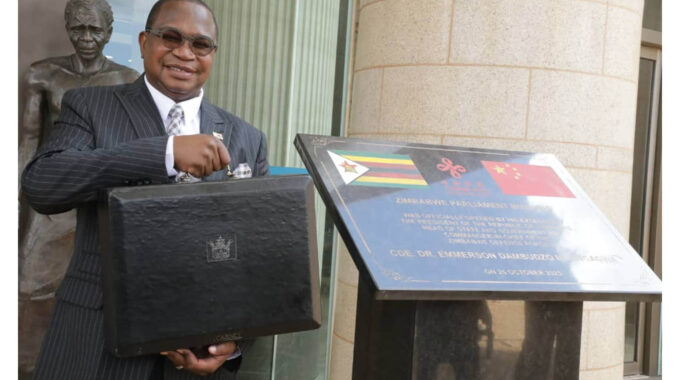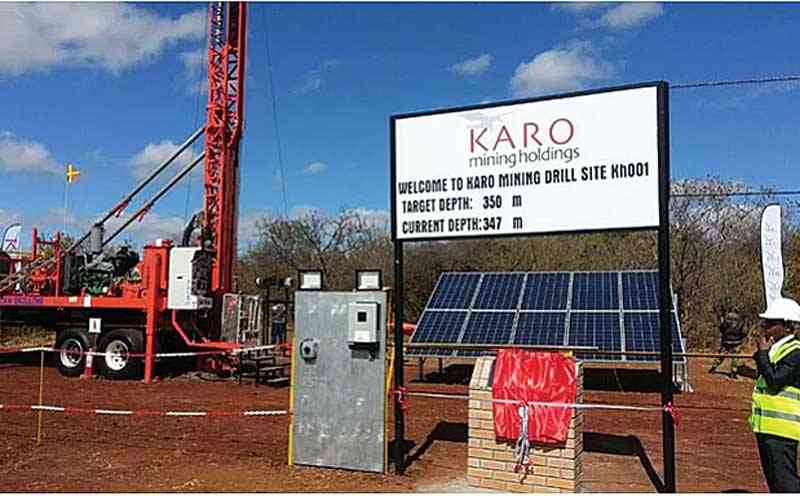Zim launches e-cadastre for efficient land management
AS Zimbabwe moves to grow the agricultural sector to anchor economic development, it has launched the electronic cadastre as part of efforts to modernise the land administration system.
A cadastre or cadaster is a comprehensive recording of the real estate or real property’s metes-and-bounds of a country. Often it is represented graphically in a cadastral map.
The e-cadastre will help make land records more accessible in a very efficient manner, as it is projected that the programme will unlock the much-needed revenue in the entire land administration value chain.
At the moment the land administration system is largely manual, fragmented and poses numerous challenges including its opaque, non-transparent and inefficient nature, which has hindered efforts to promote sustainable land use, attract investment, reduce poverty and inequality.
Speaking at the launch, Dr John Basera, the permanent secretary in the Ministry of Lands, Agriculture, Water, Fisheries and Rural Development said the agricultural sector has grown by 36 percent from about US$5.6 billion industry to US$8.1 billion and managed to achieve five-year targets in one and a half years.
Dr Basera said what is left is to consolidate or even to grow the sector further, hence the need to digitise land management and administration systems for an improved agricultural growth and productivity.
He said the cereal production subspace is also doing well as the country is now food secure in that area on the basis of the religious implementation of the dictates, tenants and key touchpoints as contained in the agricultural recovery and growth plan.
“You can imagine we are projecting about 3 million metric tons of cereals this year and this is actually against a national annual requirement of 2.2 million metric tons,” said Dr Basera.
He said for the first time in many years, the country is now wheat and flour sufficient, becoming one of the two countries in Africa together with Ethiopia to achieve that feat.
The country is this year expecting to produce 375 000 metric tons against a national annual requirement of 360 000 metric tons.
“So we are going for growth, but we need these support tools in the agriculture transformation tool kit, we need these support tools -the e-cadestre, the electronic land management and administration systems-we need those so that we sustain and consolidate on the gains which we have made so far, and also on the momentum which we have gained so far,” said Dr Basera.
Regarding maize productivity levels, he said the country is looking at a growth of 189 percent from about 0.4 to 0.5 tons per hectare prior to 2019 to about 1.2 to 1.4 range.
For the tobacco crop, Dr Basera said the country is looking at 1 560 kg per hectare to about 1 900 kg per hectare.
He said one of the six outcomes the agriculture sector has is growth in terms of export earnings, saying they are also going for growth in terms of export earnings as a sector, in an effort to bring in foreign currency for the country.
“An example of our major exporter is tobacco, obviously prior to 2019, and before the promulgation of the tobacco transformation strategy, we were hovering around US$760 million in terms of tobacco exports, but now we are looking at US$1 billion export crop which is quiet incredible,” said Dr Basera.
The sector, he explained, is going for growth, adding that attainment of Vision 2023 is now imminent.
The launch of the e-cadastre will play a pivotal role in supporting the Presidential title deeds and settlement regularisation program being spearheaded by President Emmerson Mnangagwa, which aims to provide title deeds to citizens.
Speaking at the same event, chief director at the Surveyor General, Mr Edwin Guvaza, whose department spearheaded the e-cadastre project, said land is the backbone of any country’s economy, and cadastre is a critical component or primary building block of the entire national land administration system.
“The conversion of Zimbabwe’s land records from a manual paper based on form to a digital format is long overdue,” he said.
He said the records have been accumulating since 1890 and have not been immune to the vagaries of wear and tear as well as dilapidation arising from their constant usage over time, in the process exposing the country to some possible catastrophe in the event of some natural disaster.
Prior to the launch of the program, people had to travel to either Harare or Bulawayo to seek any services.
-New Ziana










